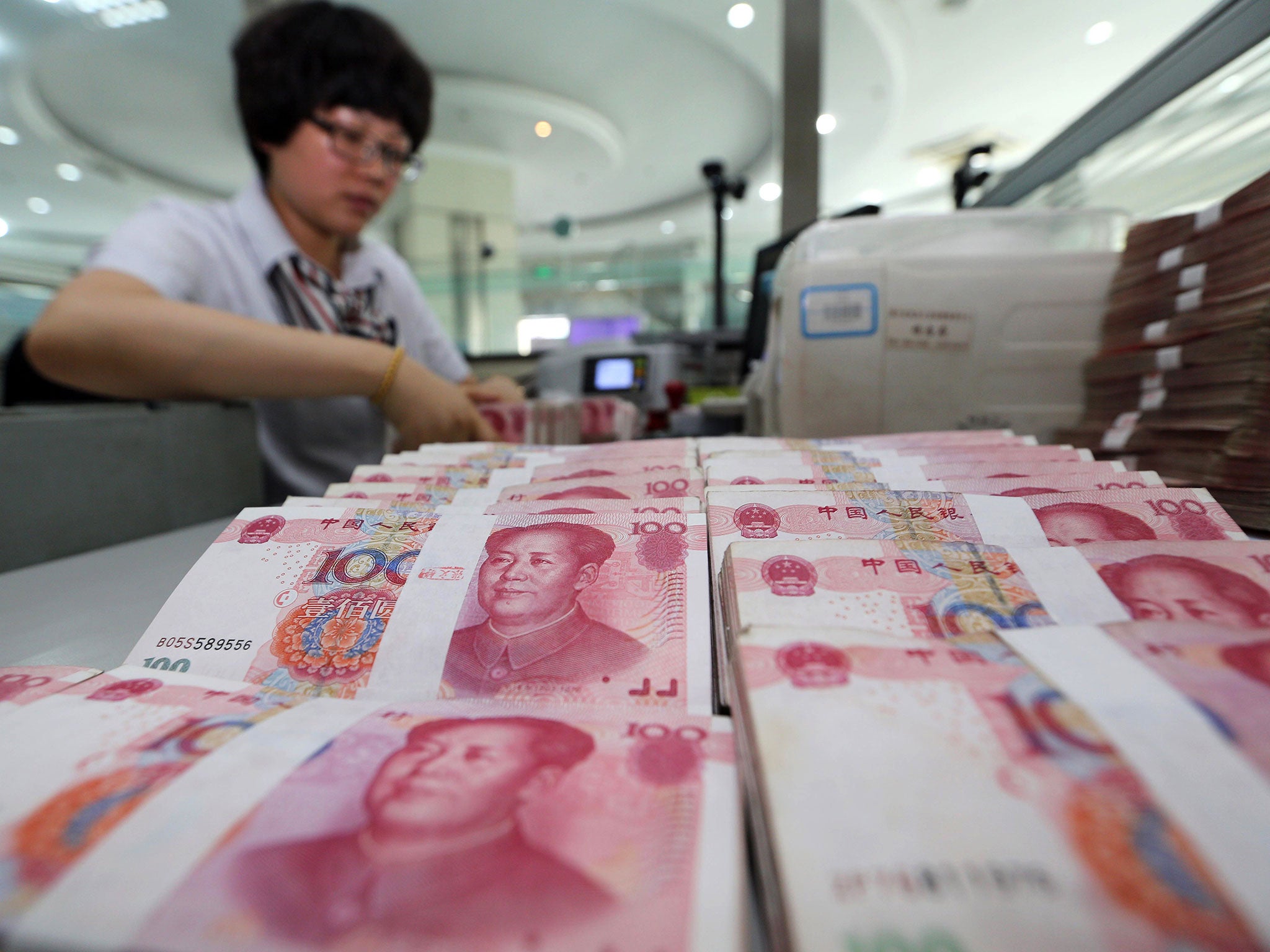Should the world be worrying about falls in value of the yuan?
Economic View: Large countries such as China trade less than small countries in relative terms

Your support helps us to tell the story
From reproductive rights to climate change to Big Tech, The Independent is on the ground when the story is developing. Whether it's investigating the financials of Elon Musk's pro-Trump PAC or producing our latest documentary, 'The A Word', which shines a light on the American women fighting for reproductive rights, we know how important it is to parse out the facts from the messaging.
At such a critical moment in US history, we need reporters on the ground. Your donation allows us to keep sending journalists to speak to both sides of the story.
The Independent is trusted by Americans across the entire political spectrum. And unlike many other quality news outlets, we choose not to lock Americans out of our reporting and analysis with paywalls. We believe quality journalism should be available to everyone, paid for by those who can afford it.
Your support makes all the difference.Everyone from buttoned-down Japanese central bankers to former baseball star Jose Canseco (or whoever hacked his Twitter account) seems to be worried about the sliding value of China’s currency, the yuan. The fear is that a cheaper yuan will spur other export-dependent countries to devalue as well in order to remain competitive, sparking a global currency war. Meanwhile, ordinary Chinese will presumably race to move their money out of the country and Chinese companies will struggle to pay back loans taken out in dollars. A truly uncontrolled dive threatens to cause havoc throughout China’s opaque financial system.
Such fears are overblown. The true impact of a falling yuan is likely to be both more nuanced and more limited. At the most basic level, a falling currency raises the prices of imported goods and lowers the prices of exported goods. Demand for and consumption of imports should decline as they become more expensive, while exports receive a boost. China says that it now favours a stable yuan and has been spending billions each month to buy up the currency to bolster its value. There would appear to be two dangers: first, that the effort fails in the face of concerted downward pressure from the markets; second, that China itself decides to devalue in order to revive its export-focused manufacturing sector.
Yet how bad would that really be? Chinese companies are moving quickly to pay off or restructure their dollar loans. As for consumers, it’s important to remember that large countries such as China trade less than small countries in relative terms – with imports comprising only about a fifth of Chinese GDP.
Additionally, not all the products countries import are equally price-sensitive. Machinery, metals, minerals and chemicals make up about 60 per cent of Chinese imports. Chinese commodity imports are likely to continue to decline, but more because of the overcapacity created by a surge in investment after the 2008 global financial crisis, rather than anything to do with the yuan.
The sheer volume of Chinese exports means the country does have an outsized impact on world markets. Yet Chinese exports remain dominated by electronics and garments. Base metal processing and miscellaneous manufacturing bring the proportion up to almost 70 per cent of total exports. These are still low-wage and low-skill sectors.
The countries that will feel the most pain – low-wage nations such as Bangladesh, Vietnam and Indonesia – represent a relatively limited subset of the global economy. While China recently raised its share of global clothing exports at their expense, the world’s biggest economies have much less to fear.
The latter no longer make the kind of basic manufactured goods that dominate Chinese exports, at least not in large quantities. China received $459 per ton of exported steel in December but paid $1,023 per imported ton. Why the difference? China is exporting low-quality steel but importing more valuable, specialty products.
Nor would a falling yuan necessarily generate a wave of global deflation. Core price deflation in energy, commodities and food has more to do with increased productivity and overinvestment outside of China than it does with yuan policy. If declines in the dollar after the 2008 crisis and the yen more recently didn’t spur worldwide deflation, there’s no reason to think a fall in the yuan would now.
Before worrying about what China does, other countries should set their own houses in order. After 2008, the world economy revived on the back of a Chinese construction boom that drove up commodity prices and investment. Now that China’s slowdown has been evident for at least a year, companies would be well advised to start planning for a “new normal” of slower growth and investment, as well as a moderately weaker yuan.
If the rest of the world wants China to join the global economy, it has to be willing to treat the country the same as any other. It’s a bit rich for nations such as Japan, which has allowed the yen to plummet against the dollar, to suggest that China should impose hard capital controls. If the market thinks the Chinese currency is overvalued, it should be allowed to find its level.
Christopher Balding is an associate professor at the HSBC Business School in Shenzhen. He is author of ‘Sovereign Wealth Funds’ and columnist for Bloomberg Views
Join our commenting forum
Join thought-provoking conversations, follow other Independent readers and see their replies
Comments